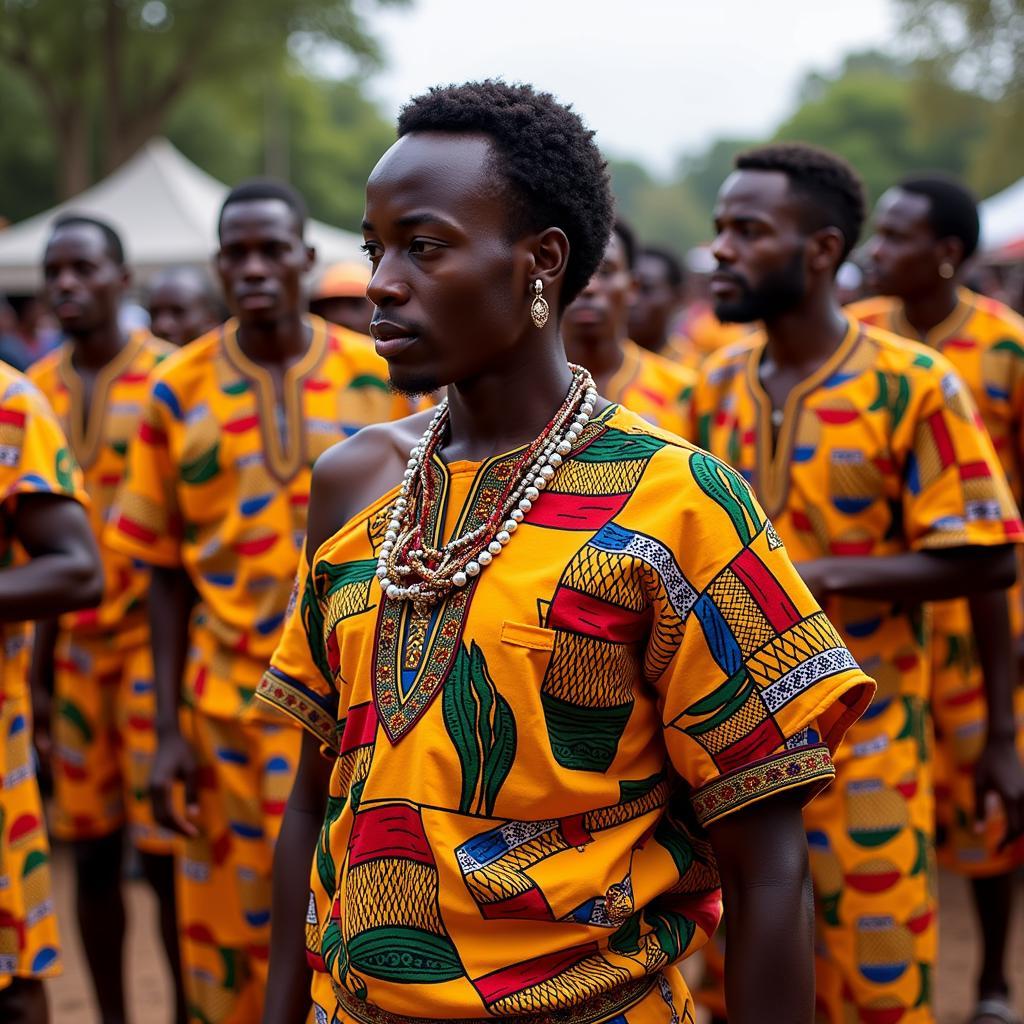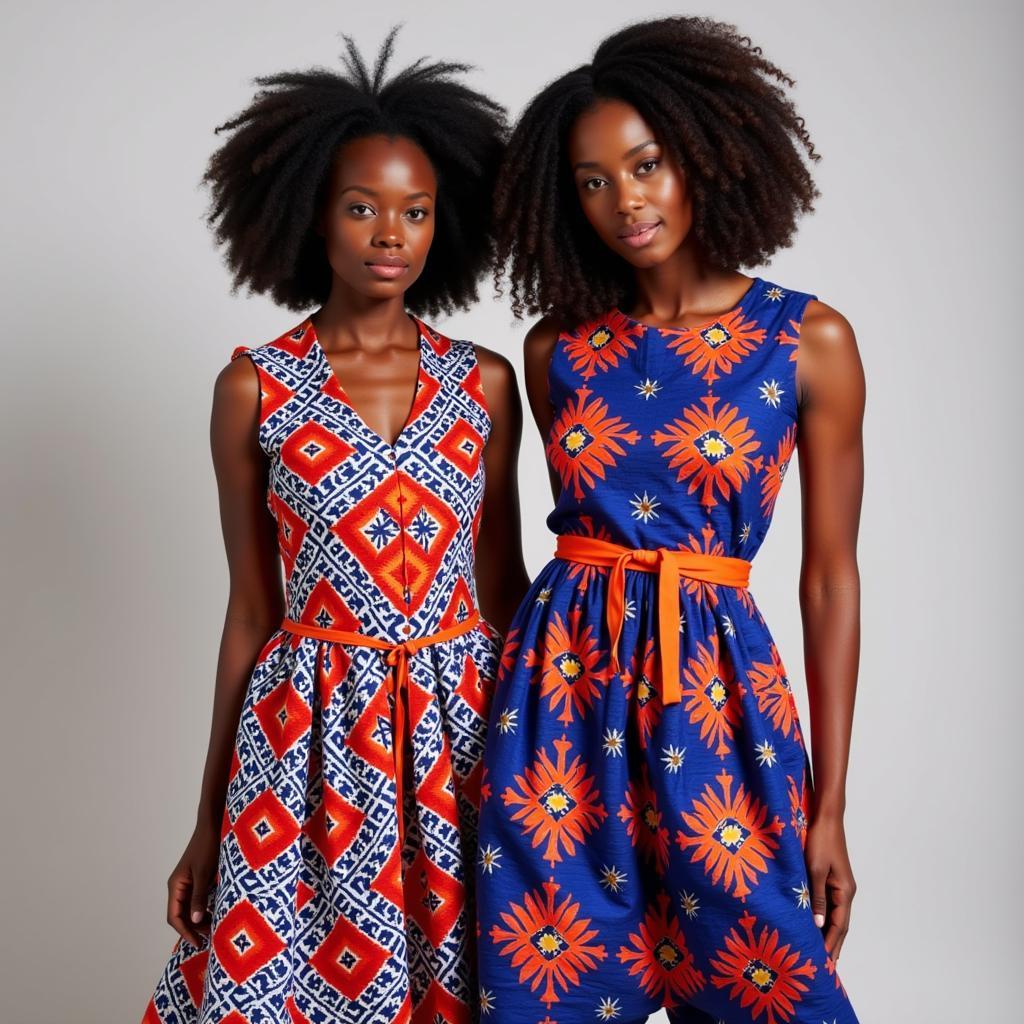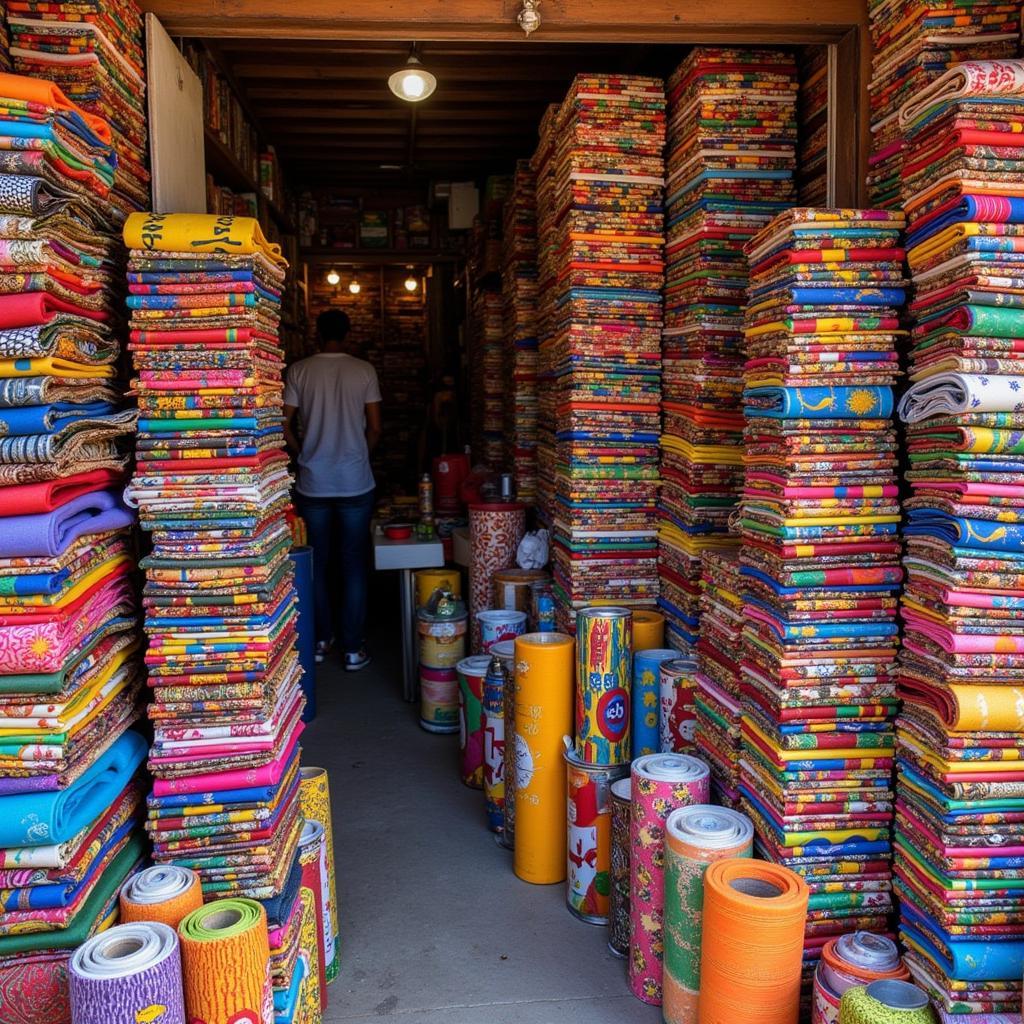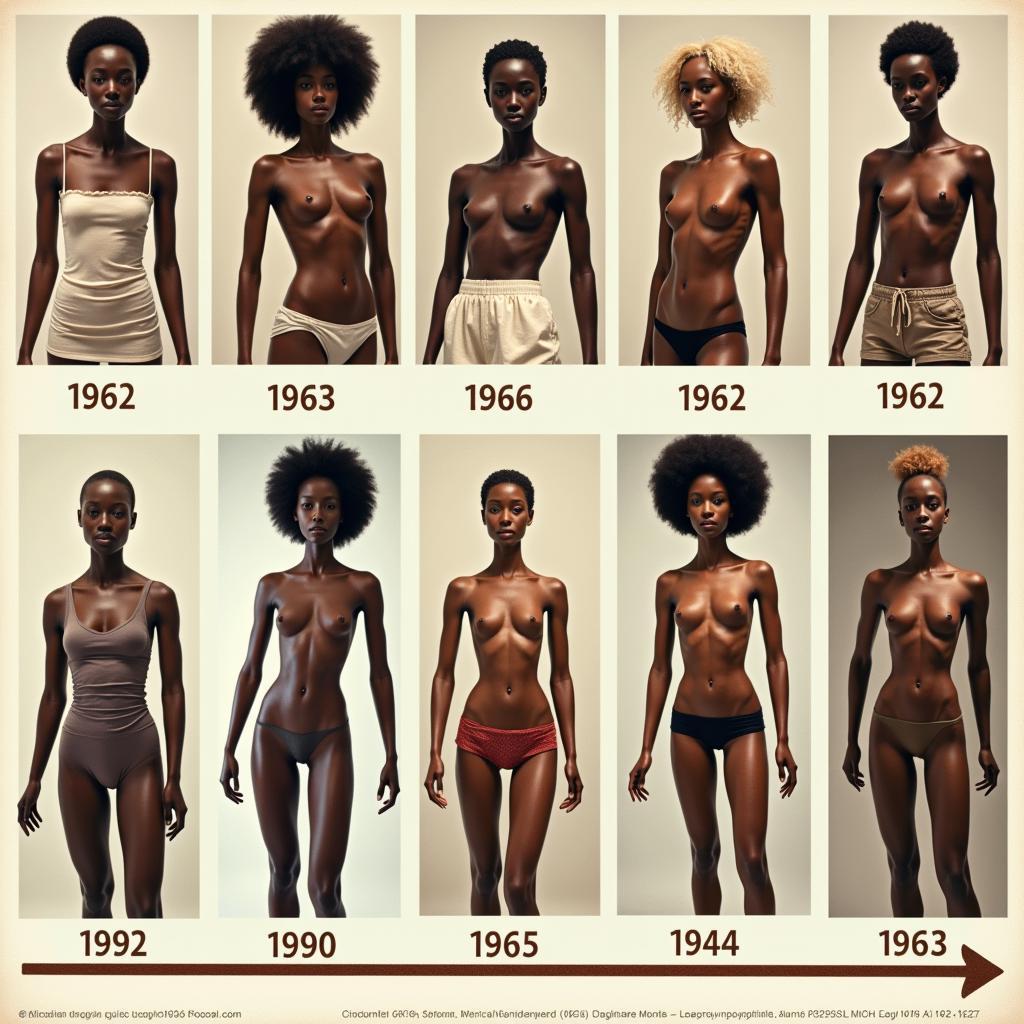A Vibrant Tapestry: Exploring African Ethnic Fabrics
African Ethnic Fabrics are more than just cloth; they are vibrant expressions of culture, history, and identity woven into intricate designs and bold colors. From the intricate patterns of Kente cloth to the flowing elegance of Aso Oke, these textiles tell stories that have been passed down through generations, connecting the wearer to their heritage and the spirit of Africa.
The Significance of African Ethnic Fabrics
Across the diverse landscapes of Africa, each ethnic group has developed unique textile traditions, resulting in a breathtaking array of fabrics. These fabrics are not merely decorative; they play a crucial role in various aspects of life:
- Ceremonial Significance: Many fabrics are specifically woven for important events such as weddings, funerals, and festivals. The colors, patterns, and even the way the fabric is worn can hold deep symbolic meaning. For instance, red might symbolize power in one culture, while in another, it signifies mourning.
- Social Status: The type of fabric worn can often indicate social standing, wealth, or lineage. Intricately woven fabrics using expensive materials like silk or adorned with intricate beadwork often signify a higher social position.
- Storytelling Medium: Beyond their aesthetic appeal, African ethnic fabrics often serve as a canvas for storytelling. Woven or embroidered motifs can depict historical events, myths, proverbs, or even represent specific clans or families.
 African Kente Cloth Ceremony
African Kente Cloth Ceremony
Popular African Ethnic Fabrics and Their Origins
With a continent as vast and culturally rich as Africa, the variety of ethnic fabrics is immense. Here are a few examples of renowned fabrics and their origins:
Kente Cloth (Ghana):
Originating from the Ashanti people of Ghana, Kente cloth is renowned for its bright colors and geometric patterns. Woven on narrow looms, individual strips are sewn together to create larger pieces. Each pattern holds a specific meaning, representing proverbs, historical events, or important figures.
Aso Oke (Nigeria):
This hand-woven fabric is an integral part of Yoruba culture in Nigeria. Traditionally woven by men on upright looms, Aso Oke comes in different types, including “Aso Ebi” (family cloth) worn during celebrations. The fabric is often embellished with embroidery or intricate designs.
Bogolanfini (Mali):
Also known as mud cloth, Bogolanfini is characterized by its earthy tones and bold geometric patterns. The fabric is dyed using fermented mud and plant extracts, creating unique designs. Bogolanfini holds deep cultural significance in Mali, often used in rituals and ceremonies.
Shweshwe (South Africa):
This printed cotton fabric, originally from India, has been embraced by South African culture, particularly by the Xhosa people. Shweshwe features distinctive geometric patterns and vibrant indigo hues. It’s commonly used for traditional attire, but its popularity has extended to contemporary fashion as well.
 South African Women in Shweshwe Dresses
South African Women in Shweshwe Dresses
The Future of African Ethnic Fabrics
While deeply rooted in tradition, African ethnic fabrics are experiencing a resurgence in popularity, both within the continent and globally. Contemporary designers are incorporating these textiles into modern fashion, breathing new life into ancient techniques and patterns.
- Sustainable Fashion: As the world embraces sustainable practices, the use of natural dyes and handwoven techniques in African ethnic fabrics aligns perfectly with eco-conscious values.
- Empowerment through Heritage: The rising interest in African fashion is providing economic opportunities for artisans and communities, preserving traditional craftsmanship and cultural heritage.
- Global Inspiration: The bold aesthetics and unique stories woven into African fabrics continue to inspire designers worldwide, demonstrating the enduring power and influence of these textiles.
Where to Experience the Beauty of African Ethnic Fabrics
Whether you’re captivated by the intricate patterns of Kente or the earthy elegance of Bogolanfini, there are numerous ways to experience the beauty of African ethnic fabrics:
- Visit local markets and craft centers: Immerse yourself in the vibrant atmosphere of African markets, where you can find a dazzling array of fabrics and interact directly with artisans.
- Attend cultural festivals: Many African countries host vibrant festivals showcasing traditional music, dance, and attire, offering a glimpse into the rich cultural significance of ethnic fabrics.
- Support ethical fashion brands: Seek out designers and brands that prioritize ethical sourcing and collaborate with African artisans, ensuring fair trade practices and the preservation of traditional skills.
 Colorful African Fabric Market
Colorful African Fabric Market
Conclusion
African ethnic fabrics are far more than just textiles; they are living tapestries woven with history, culture, and artistry. From their ceremonial significance to their role in contemporary fashion, these fabrics continue to captivate and inspire. By understanding and appreciating the stories behind each thread, we gain a deeper appreciation for the rich cultural heritage of Africa and the enduring power of its artistic traditions.
FAQ
What is the most popular African fabric?
While it’s difficult to pinpoint one “most popular” fabric, Kente cloth from Ghana is widely recognized and celebrated for its intricate patterns and vibrant colors.
What is special about African fabrics?
African fabrics are special for their intricate designs, vibrant colors, and the cultural significance embedded in each piece. They often tell stories, signify social status, and play a vital role in ceremonies and traditions.
How are African fabrics made?
African fabrics are made using various techniques, including hand-weaving on traditional looms, batik dyeing, mud cloth techniques, and intricate embroidery. Many fabrics utilize natural dyes derived from plants and minerals.
Are African fabrics expensive?
The cost of African fabrics varies greatly depending on factors like the complexity of the design, the materials used, and whether it’s handmade or factory-produced. However, you can find authentic and beautiful fabrics at various price points.
Where can I buy authentic African fabrics?
You can find authentic African fabrics at local markets in African countries, specialized fabric stores, and online retailers that prioritize ethical sourcing and fair trade practices.
What can I make with African fabrics?
African fabrics are incredibly versatile and can be used to create a wide range of items, including clothing, accessories, home decor, and artwork. From stunning dresses and headwraps to vibrant wall hangings and upholstery, the possibilities are endless!
What is the best way to care for African fabrics?
Care instructions vary depending on the specific fabric and dyeing techniques used. However, as a general rule, handwashing with mild detergent and air-drying in the shade is recommended for most African ethnic fabrics to preserve their vibrant colors and intricate details.
Need Help?
If you need any further assistance, please feel free to contact us:
Phone: +255768904061
Email: [email protected]
Address: Mbarali DC Mawindi, Kangaga, Tanzania.
We have a dedicated customer support team available 24/7 to assist you.

